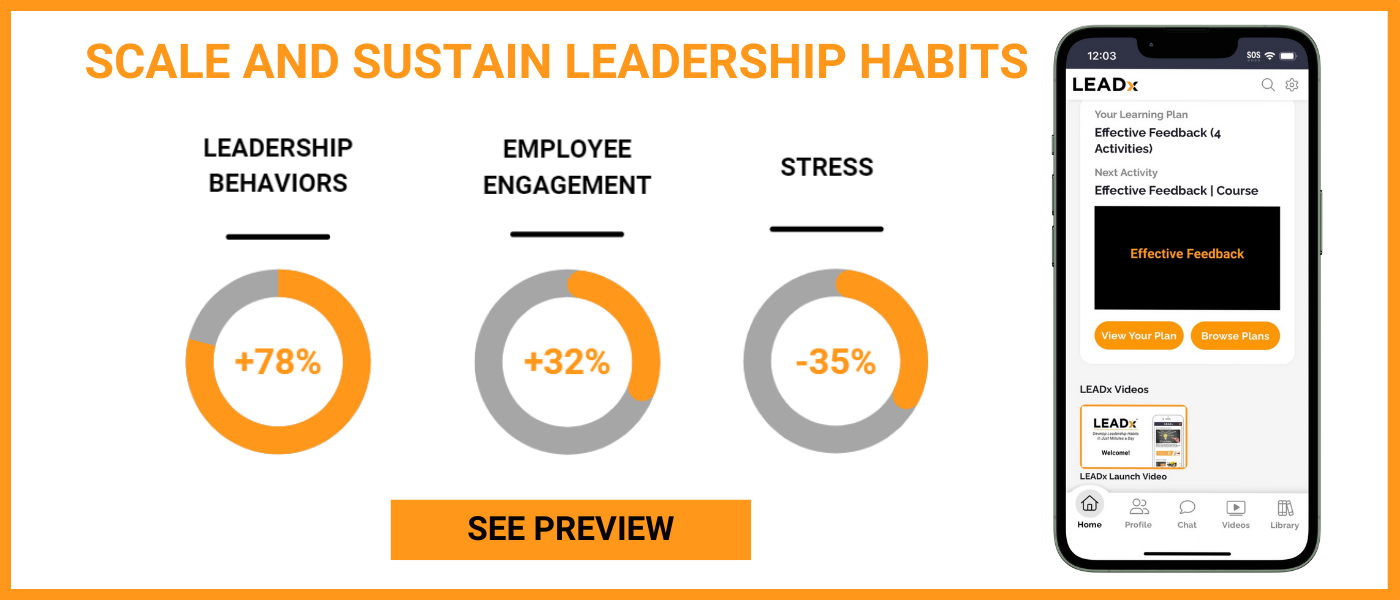
Recent Gallup research reveals a stark reality: only 33% of U.S. employees are engaged at work. Since managers are responsible for at least 70% of employee engagement, there’s clearly a gap between what employees need and what leaders are providing.
Jan Rutherford and Jacquie Jordan’s new book, Becoming A Self-Reliant Leader addresses this urgent issue head-on. Drawing on Rutherford’s experience as a Fortune 500 Advisor and former Green Beret and on Jordan’s experience as a leadership development consultant and Assistant Professor at the United States Military Academy, their book offers a powerful collection of stories and strategies to build more resilient, engaged, and adaptive teams.
 To learn more about self-reliant leadership, I had the opportunity to interview Rutherford.
To learn more about self-reliant leadership, I had the opportunity to interview Rutherford.

What Is Self-Reliant Leadership?
Rutherford defines a self-reliant leader as follows: “The self-reliant Leader takes personal responsibility, assumes ownership, fulfills the obligation and responsibility for personal growth and development, demonstrates grit in the face of adversity, and operates with a sense of duty towards others.” He also was careful to distinguish that a self-reliant leader is not only self-reliant, but also one-hundred percent reliable.
Self-reliant leaders excel across three main pillars:
- Leading self: Amplify one’s personal responsibility and ownership by cultivating grit.
- Leading others: Boost one’s accountability by getting people to work not only with each other but also for each other. This fosters a sense of duty.
- Leading the organization: Design an environment that results in greater collaboration, alignment, and focus.
“Leaders become even more effective at leading across these three pillars when they generate true commitment over mere compliance,” Rutherford explained. “Commitment generates the energy required for sustainable engagement and performance.”
How to Become a Self-Reliant Leader: Taking a Crucible Expedition
To become a self-reliant leader, Rutherford encourages people to constantly test themselves by creating their own crucibles or embracing those they encounter. “A crucible is a ceramic container in which metals are melted so they can be forged into something stronger,” Rutherford said. “In the context of leadership, it’s also a severe test in which people can be shaped into something indomitable, a trial where leaders emerge more durable and resourceful than ever before.” The idea is that by experiencing a crucible, you can change your narrative and reshape yourself into a self-reliant leader ready to serve others.
Yes, Rutherford means this metaphorically, but he also means it quite literally. Rutherford runs Crucible® Expeditions around the world. He’s run twenty-four such expeditions, from Argentina to Alaska, with over 250 participants. His multi-day team-building retreats pair up business executives with transitioning military veterans to get them out from behind their desks and into the wild (far beyond their comfort zones).
Whether they’re being roped in on the side of a cliff, scaling slabs of red rock, leaping across icy chasms, or hunkering down in torrential hail, participants push their mental and physical abilities to the limit. “They come out on the other side of the journey renewed and reinvigorated,” Rutherford highlighted. “Their growth as leaders is accelerated, accomplishing what might have taken months or years in a typical training environment in mere days.”
These expeditions uncover tools participants never realized they had at their disposal and expose them to a new understanding of what is needed to actually lead others during adversity. When faced with hardship and adversity, Crucible participants find they can choose how they show up, recognizing they are not governed solely by external factors. “They are forced to set aside their personal struggles, for a time, to lead their team,” Rutherford said. “Struggles connect teams, and though it may cull the herd, it strengthens character, camaraderie, and culture.”
Julie Keller, an executive participant in one of Rutherford’s programs, said, “Being in an environment where you have nothing to prove, protect or promote helped us meet the challenges starting on day one. When you let go of preconceived notions about yourself, it was a really interesting environment to be in. Your title, level, fitness, experience, etc. didn’t matter. We all had to accomplish the tasks together.”
Eight Key Lessons in Self-Reliant Leadership that Rutherford Learned After 10 Years of Crucible Expeditions
In his time leading Crucible Expeditions, Rutherford shared eight critical lessons he learned:
- Get “squared away.” Learn to lead yourself before leading others.
- Develop courage, curiosity, and grit to overcome adversity and lead your team to success.
- Select the right people for your team or organization, those who demonstrate selflessness, adventurousness, and possess heroic aspirations.
- Create the right direction, pace, and tone to achieve any goal.
- Gain true commitment—over mere compliance—from your team.
- Nurture compassion as a leader while also creating a more positive and energized work environment.
- Build mutual trust among and between your team members and fellow leaders.
- Balance confidence with the genuine humility to admit, “I don’t know, I don’t understand, I made a mistake, or I need some help.”
Becoming a Self-Reliant Leader
Self-reliant leadership isn’t just about managing teams or running companies; it's about cultivating a mindset of responsibility, resilience, and proactive growth in every aspect of your life. What really matters is how we come out of our own personal crucibles that often changes our narrative. By applying these lessons and by pushing yourself outside of your comfort zone, you can forge your own journey toward becoming a self-reliant leader.






